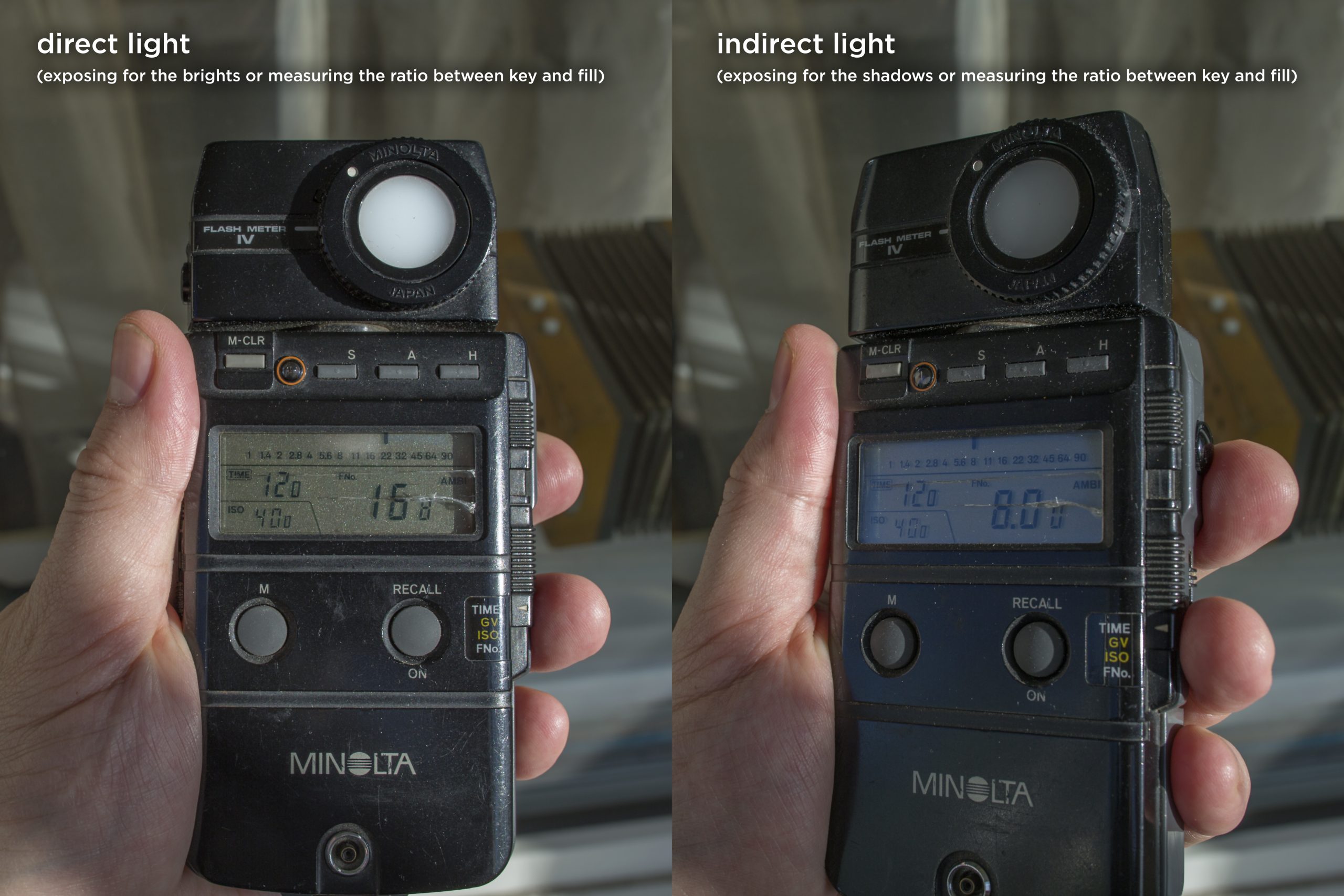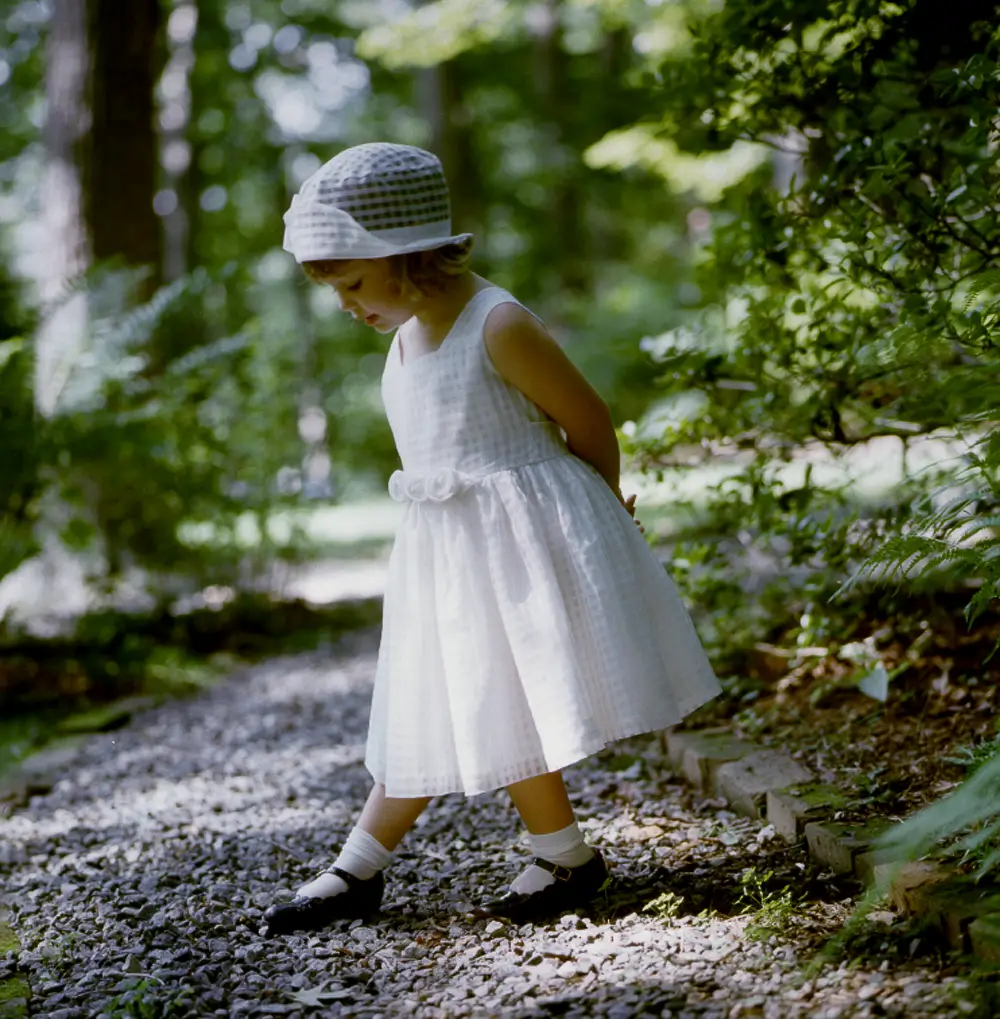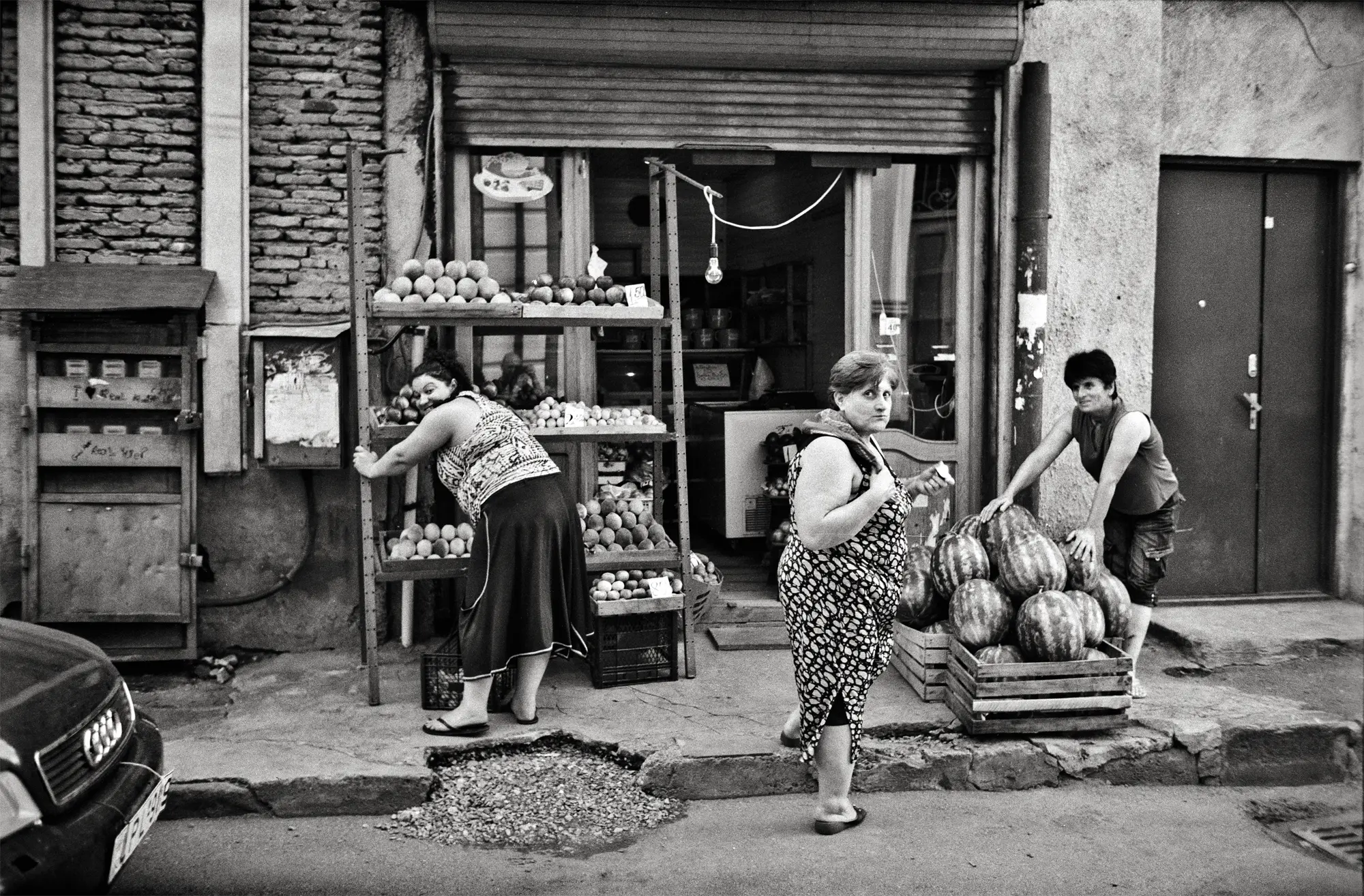Hamish is an obsessive man, and that’s why we get along. I have never met him, but we send each other massages at odd hours about lenses, about the gospel of the rangefinder. We are cut from that same Leica cloth and it binds us. We were talking about light meters a little while ago and our conversation ended with an invitation from him to write a guest post.
(Featured image above – street photo by Marco North – Tbilisi, Georgia Leica M4-P, 35mm Summicron, Ilford Delta 100)
Let’s get a few things out of the way. I am a very manual photographer (Leica M4-P, Hasselblad 500CM, Hasselbald Xpan and a Sinar 4×5). I primarily shoot two film stocks – Kodak Tri-X and Ilford Delta 100. That’s it. I am that simple a person, and every time my personal work strays from this minimalist tool set, I lose all inspiration to shoot and the work is pretty lame. So, I stick to what I am good at – two black and white negative stocks. If Agfa was still making film, there would be color in that list (more on that later).
None of my cameras have a built-in light meter, except for the Xpan but rest assured, I never use it. In addition to being a photographer, I am a filmmaker, and have worked as a cinematographer for 25 years now. That means I need a damn good light meter, one I can stake my reputation on. Back in film school we all had Sekonics – the one with the big half-sphere on it. What can I say about them, except that if you dropped it many times it still seemed to work. We shot negative those days, so unless we could read our printing points very carefully, we did not know how correct our exposures were unless things were murky or too blown out. The only thing we could judge easily was ratios – if the difference between the key light and the fill light was what we going for (or not). Honestly, film looks so good most of the time we did not care about our exposures as long as things were in focus. That was the next miracle.

The second I got out of film school I bought a digital meter – a Minolta IV and I made sure to buy a flat disc. I had seen one of my professors use one – and everything he had taught me fell into place. The film plane is not spherical – it is flat – why not measure the light that will truly hit that flat film plane by placing a flat disc right in front of the lens when taking a reading? All of the seasoned gaffers I worked with in those days had flat discs on their meters so I was immediately passing muster with them. In the film world, a cinematographer stays with the camera, and rarely leaves it. Most of the final readings are done by the gaffer with plenty of communication between them. I had a great cinematography professor who told me – “Never run around taking lots of readings, you will just look nervous. If you do want to take a reading, move slowly, confidently, do it just once and go sit back next to the camera.” Sage advice. The beauty of the flat disc is that it only tells you what it sees, as opposed to the sphere which is constantly averaging the different lights it is seeing. Tilting the flat disc so it was in shadow, taking one reading and then tilting it to the key light gave me a very precise answer about what was going to expose on the film.
Fast forward to a point in my eclectic career when I had a childrenswear client that wanted me to shoot color stills, preferably slide film and medium format. I had always tried to shoot AGFA for my motion film color work, and this was the fateful moment that I tried Agfachrome 200RSX film. That really opened up my world. The stock was as sharp and contrasty as you would expect a slide film to be, but there was an openness to the mids all the way into the toe, and skin tones, especially the children’s skin tones, were so spot on, so creamy and pale and those amazing gradations (and the precise color of those little eyes) that the work just sang. The other main point about Agfa is that the underexposure runs towards a brown/purple in stark contrast to Kodak which runs orange in the shadows and Fuji which runs blue/green. So, Agfa = old master colors.

Agfachrome 200RSX, Hasselblad 500CM, 150mm Zeiss Sonar
If you have never shot slide film professionally, it is really an intricate developing process. You set the exposure and then shoot a single frame on a roll of film in a dedicated magazine that will be developed first. (Slide film was processing in about 2 hours in those days by a good lab.) Then you hovered over that test roll on a light table with the client and decided if the exposure needed to come up or not. As you always took copious notes while shooting, you knew what rolls related to what setups, so you could direct the lab to push or pull individual rolls in half stop increments. That was the moment of truth for my trusty Minolta IV. A lot of the fabrics were a shiny silk, and pastel if not white – so you can imagine the dilemma of exposing for the clothing, and the pale skin of a child in daylight situations (on a Hassie with a 150mm lens). The flat disc always told me the truth, and we rarely had to adjust more than a half stop. Keep in mind, I was shooting with no assistant, with kids that were easily distracted so moving fast is an understatement for our process. I did that same thing – tilt once to the shadows, take a reading, tilt in the key to read, then decide on how I want to work the exposure split given the brightness of the fabric in relationship to their skin tone and then a little gut-level fortunetelling and I set my exposure, fired off 12 shots, and if I was lucky enough to slap the next magazine on, get a few more before the kid wanted to put the dress over her head or go talk to some ducks. Most of our talent were three year olds. It was very serious and silly work all at the same time.
So, that is the reason I tell every film student I meet to buy a Minolta IV (used on ebay) before anything else. 25 years later (and yes, after being dropped a few times) mine works just fine. Hamish was asking me what kind of meter I suggested and that is how we ended up understanding there might be an article in this discussion. He is using one of those Sekonics, or maybe a Weston which has a smaller spherical disc. Does it matter? Probably not, because he shoots negative. If you want the true story, and are very careful with your lighting a flat disc is invaluable.
Shoot film!
Share this post:









Comments
Stefan on Light Meters – by Marco North
Comment posted: 31/07/2015
Comment posted: 31/07/2015
Paul Bingham on Light Meters – by Marco North
Comment posted: 12/05/2016
I enjoyed your post on metering. I have a Kenko mfm 2100 which is really the old Minolta Flash Vl. I also use a Gossen Lunasix 3S. (that I adore and have had it forever.) I would really like to see you to write a detailed post regarding how you meter for black and white negative film, colour negative film and also how you meter for digital if any different from how you metered for the scenario in this post. I just cannot get enough info on exposure and I am sure that I am not alone. Needless to say my kfm 2100 is sitting now with a flat disc on it. I shoot film and digital, however, the digital is shot more like a polaroid for me. Not really a big digital fan but, I do use it. I now shoot almost excessively with a tripod, mirror up, if camera has this feature. I am a very slow coach. I still use my Leica M4P and a Nikon F6 and Bronica SQAi and Digital Fuji XPro1 ....
Really appreciated this post.
Thanks.
All the Best
Gergana on Light Meters – by Marco North
Comment posted: 01/09/2019
I could feel the child's crowd :D
Khürt Louis Williams on Light Meters – by Marco North
Comment posted: 04/05/2020
Marco, what would you have done had the subjects had dark skin? Had they been black?
Comment posted: 04/05/2020